Cool Jobs: Sucking up science with mosquitoes
Scientists study these blood-suckers in hopes of learning how to keep us safe from disease

Too many mosquitoes might send some people running the opposite direction. But these scientists get close — to learn more about them.
mirceax/iStockPhoto
Share this:
- Share via email (Opens in new window) Email
- Click to share on Facebook (Opens in new window) Facebook
- Click to share on X (Opens in new window) X
- Click to share on Pinterest (Opens in new window) Pinterest
- Click to share on Reddit (Opens in new window) Reddit
- Share to Google Classroom (Opens in new window) Google Classroom
- Click to print (Opens in new window) Print
If mosquitoes have a favorite food, Chloé Lahondère is it. Some people can spend hours outside and only slap at one or two of the blood-sucking fiends. Not Lahondère. Outdoors, she says, “they’re eating me alive… Even in the lab, if one escapes, they are going to come for me.”
And she is not alone. Some people smell as enticing to mosquitoes as fresh baked chocolate chip cookies smell to us. Count Lahondère among those mosquito magnets.
And that’s especially unfortunate for this medical entomologist — someone who studies how insects impact people’s health. Her work at Virginia Tech in Blacksburg focuses on mosquitoes.
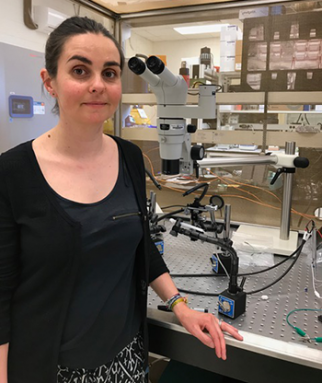
These buzzing, blood-sucking vampires might send most of us heading the other way. But you’d have to run a very long way to escape them. Mosquitoes live on every continent except Antarctica.
There are 3,500 known species, divided into 40 genera — or closely related species groups. The female (and only the females) slurp the salty stuff up through straw-like mouthparts. They need the nutrients in blood to grow their eggs. And they harvest that blood from mammals, birds, reptiles — even fish (those bold enough to hop out of the water, anyway).
As mosquito moms sip up blood, they leave behind more than itchy bug bites. Their saliva can transmit germs that they picked up from a previous meal ticket. Only four genera of these insects carry diseases that infect people. But those infections cause plenty of misery. Some diseases feel like the flu but can prove deadly — such as chikungunya, yellow fever and malaria. Some mosquitoes can carry Zika — a virus that can cause birth defects and other serious symptoms. Others transmit dengue, a virus that causes horrible pain.
Millions of people die each year from mosquito-borne diseases. That means “mosquitoes are the deadliest animal on Earth,” says Clément Vinauger. This experimental biologist at Virginia Tech is Lahondère’s husband. And he, too, works with mosquitoes.
Yet for all the death and destruction that mosquitoes spread, he notes, “We don’t know a lot about their basic biology.”
That’s why mosquitoes have become a prime target for scientists. Researchers are investigating how the insects drink, learn — and pee. Some even use mosquitoes to track down diseases in people.
Along the way, some of these researchers have tethered mosquitoes to tiny slides with nail polish. They have fed their tiny charges with their own blood. Some have even picked up nasty illnesses from their research subjects. It’s all for the sake of keeping others safe from the diseases these biting bugs transmit so well.
Chilling out with mosquitoes
Lahondère hasn’t always been into mosquitoes, but “as a kid, I was fascinated by insects,” she says. “I had insect collections. And my parents were very patient with me. They let me have an ant colony in my bedroom.”
When she became an adult, Lahondère began to wonder how to combat insects that spread disease. And that’s what got her into mosquitoes. After all, she asks: “If you are trying to fight them, how can you do that, if you don’t understand how they work?”
She has focused on a mystery about their body temperature. Mosquitoes are cold-blooded. Their body temperature matches the temperature of the air around them. But as they feed on warm blood, they warm up. “Their temperature is going to increase a lot in just a few minutes,” she notes. “We were wondering how they can deal with that and not die because of heat stress.”
Keeping mosquitoes in the lab for a study like this requires keeping them fed. It’s a bloody business. At the beginning, Lahondère fed them herself. Yes, her own blood. “I had to stick my arm in the cage to feed them. At some point, I was, like, ‘I am not doing this anymore.’” She has since turned to artificial feeders. These are glass tubes filled with warm sheep’s blood. Film covers one end of the tubes. The bugs pierce it and drink their fill.
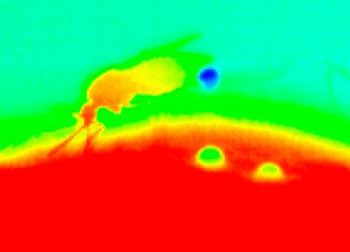
As the mosquitoes slurp, Lahondère records them with a thermographic camera. It records infrared light, which offers a gauge of temperature. This allows Lahondère to figure out where heat from the blood ends up in the mosquito.
As the hot blood goes in, some exits right away — out the other end of the mosquito. The insects appear to pee a little blood as they drink. They push drops of the liquid out their abdomens. Then, she found, they “keep the droplet at the end of the abdomen.” This allows the outdoor air to cool down that blood, which helps cool down the abdomen. Once the bug has released the blood’s excess heat this way, it sucks that cooled blood droplet back into its body.
Lahondère likens the process to what happens when someone sweats. People lose heat as air cools the sweat and evaporates the liquid. Lahondère’s team published those hot findings back in 2012.
Peeing blood is one way mosquitoes have adapted to keep their cool around human prey. But there are others. For instance, Lahondère and Vinauger have shown that mosquitoes are clever enough to steer clear of swatty humans.
Skeeter students
Blood sucking can be dangerous work, Vinauger notes. “Birds groom, humans slap. Cows move their tails.” These are ways big animals fend off the insects. Our protective maneuvers mean that mosquitoes aren’t just predators, they also become prey. “We are predators,” he notes, “because we kill them at some point.”
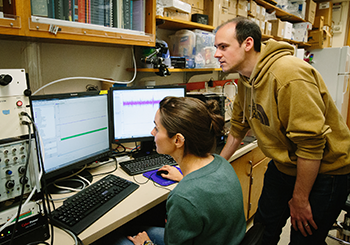
Vinauger wanted to know how mosquitoes hunt their food — us. These insects “live their lives looking for us, and using byproducts of our activity and metabolism,” he says. “But we know surprisingly little about how they do that.” He was particularly curious about how they determined who was worth snacking on and who should be left alone. Could mosquitoes learn which people to avoid and which offered a safer lunch?
To find out, Vinauger, Lahondère and their colleagues gave a group of mosquitoes some painful lessons. They put mosquitoes in a chamber containing a single human’s scent. While the mosquitoes hovered inside it, they were zapped with a small electric shock. The shock mimicked what a mosquito experiences when a person slaps at the insect, Vinauger explains. The bugs endured 10 zaps.
The next day, the scientists placed these insects in a simple maze. It was shaped like the letter Y. The bugs started at the base of the Y and could travel to either end. One end contained the human odor that had been paired with the painful shock. The other held the scent of a new person.
The mosquitoes had gotten wise after enduring those shocks. They went to the new body odor more than the one that had been paired with the zap. When placed in a tiny, mosquito-sized flight simulator, the bugs slowed their flight as they neared the “dangerous” scent.
What let the insects learn? Dopamine (DOAP-uh-meen). This is a chemical that carries messages between brain cells. It also helped teach zapped mosquitoes their lesson, Vinauger showed. In people, dopamine affects mood and is important in movement and addiction. In mosquitoes, he notes, it “lets the insect realize that there’s a signal and a punishment.”
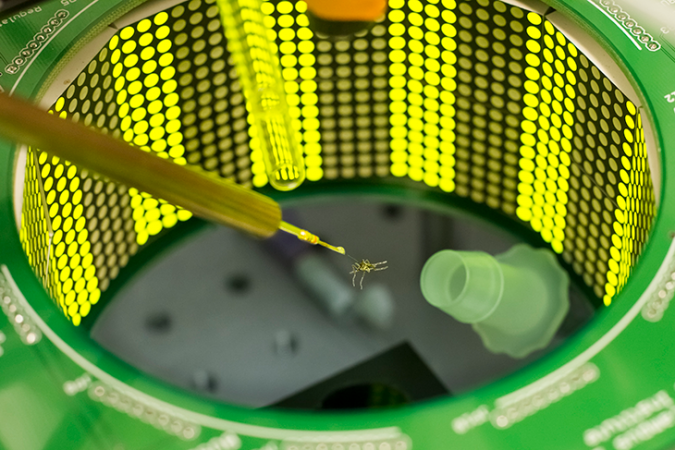
Vinauger discovered this by removing the genes in some mosquitoes that instruct their bodies to make a certain structure on the outside of certain cells. Known as a receptor, it lets dopamine attach — dock onto — the cells. Without the receptor, the insects could no longer sense dopamine.
“Without dopamine, they can’t recognize that the [signal and punishment] are occurring at the same time,” he explains. Simply put, he says: “They can’t learn.”
Vinauger, Lahondère and their colleagues described these findings last year in Current Biology.
Pumping it up
Every mosquito that’s ever taken a bite of you has been female. And they face even more challenges when it’s time to take a bite.
Most mosquito species dine on blood but only to produce eggs. The males don’t lay eggs, so they don’t need that blood, Lahondère explains. Instead, “males eat nectar and fruit.” The females eat nectar too. But they supplement their diet with “blood for the eggs.”
Nectar and blood don’t have a lot in common. Nectar is a sugary fluid produced by plants. Blood is a liquid that also contains solids such as blood cells and immune cells. How does a mosquito take in these two very different foods through the same straw?
They require pumps, according to research by Jake Socha and his collaborators. The Virginia Tech scientist studies biomechanics — or how living things move. “I always wanted to be one of those people who uncovers fundamental truths about the universe,” he says. “To me that seems like the most important thing you can ever do.”
When he started studying mosquitoes, Socha looked for the truth about how mosquitoes drink. Mosquitoes transfer some of their saliva to a person when they bite. It’s that saliva that transmits the diseases for which mosquitoes have become infamous. Understanding how mosquitoes drink, then, might help scientists understand more about how they spread sickness.
Mosquitoes suck up their meals through a straw. But they need more than a little bit of suction to get a meal.
For a straw to work, “you have to create the suction that pulls up the fluid,” Socha explains. But a mosquito’s straw is very narrow. “As you make the straw tinier, it becomes more difficult to draw through,” Socha notes. People may notice the difference between trying to drink with a normal drinking straw and trying to sip through a narrow coffee stirrer. Mosquitoes have it worse. They are stuck with a straw as thin as a human hair. Dinner, therefore, takes a whole lot of suction.
Mosquitoes provide that suction using two pumps. These are controlled by muscles in their heads. Those muscles open the pumps to draw up liquids. But how the pumps worked had been a bit of a mystery, Socha says. Butterflies drink nectar and they need only one pump. Two seemed like overkill.
To find out how the two pumps worked, Socha and his colleagues stuck the tiny bugs inside a big x-ray machine. It is located at the Advanced Photon Source, a huge research laboratory in Illinois. Inside a ring more than 1,100 meters (3,608 feet) across, magnets send subatomic particles whizzing around. Energy from these zippy particles emerges as a beam of X-rays.
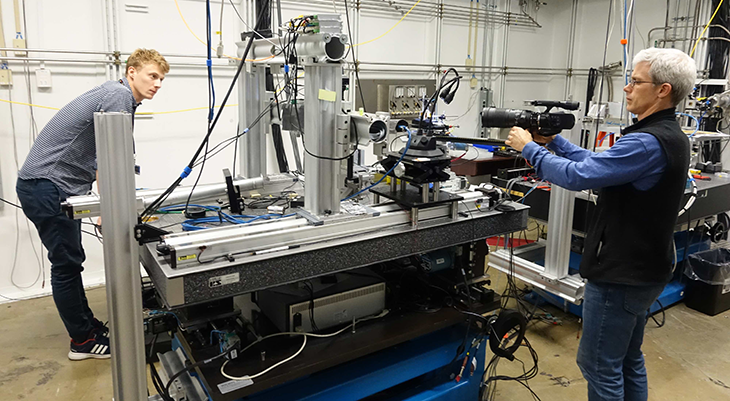
Into this powerful beam, Socha placed a single, hungry mosquito. The insect’s feet were stuck to a slide with a coat of clear nail polish. This insect was presented with a dish of nectar. Using the X-rays, Socha and his colleagues were able to record what happened inside the mosquito’s head as the insect sipped the beverage.
They found that the mosquitoes can drink in two ways. In what’s known as continuous pumping, both pumps work together. First one and then the other opens in a careful rhythm. This lets the mosquito suck steadily. The pumps don’t open all the way — just enough to keep the flow going.
But sometimes both pumps open wide and at the same time. This sends fluid rushing in. With one burst, the mosquito can slurp up 27 times more fluid than normal. “My colleague called it the Big Gulp,” Socha says. But they realized that term probably wasn’t scientific enough. So Socha and his colleagues now refer to it as a “burst event.”
If the burst event can slurp up so much more liquid, Socha wondered why a mosquito would bother with slow sucking. After all, the faster the insect can get a meal, the faster it can get away without getting swatted.
In fact, they found, the big gulp has a big cost. It takes 1,000 times more energy, Socha now reports. In the end, his team showed, continuous pumping is 40 times more effective per unit of energy expended. More food, less effort. They might just reserve the big, high energy pumping to clear blockages, rather than to get fast food, Socha says.
The researchers shared their new findings this past March 20 in Scientific Reports.
Living syringes
Socha may study how mosquitoes suck, but Brian Foy sucks up the mosquitoes. He works at Colorado State University in Fort Collins. There, this biologist studies animals that transmit diseases. The dining habits of mosquitoes, Foy has shown, mean they don’t just spread disease — they can also be used to track some sickness to its source.
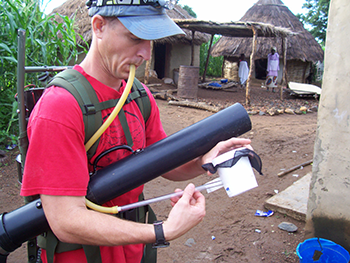
Foy didn’t start out with a love of bugs. He had wanted to become a doctor and fight disease. But once he took a college class on entomology (the science of insects), he was hooked. By studying insects that carry disease, Foy found he could combine his love of the outdoors and his desire to heal the sick. “It was really easy to move into tropical medicine and mosquitoes,” he says.
While studying ways to prevent the spread of malaria, Foy and his team realized that mosquitoes might have a use in studying people. The insects could serve as living blood samples.
Mosquitoes can’t filter the blood they suck up. They take in any bacteria and viruses present in that blood. And Foy realized that those blood meals might tell him about the diseases carried by the mosquitoes’ victims.
Think of mosquitoes as “living syringes,” he says. “They live in houses and they like to bite people. So we know if we catch them, we get a healthy proportion of blood-filled mosquitoes.”
To prove that mosquitoes could serve as tiny blood samples, Foy traveled to Liberia in western Africa. There, he and his team got up at 3 a.m. to head to homes that the owners had volunteered for he study. The researchers arrived wielding Ghostbuster-style backpacks. “They’re gentle vacuum cleaners with a big tube and a cage on the end that holds the mosquitoes,” Foy explains. “We run around and suck them off the walls.”
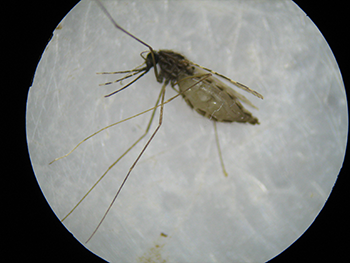
Afterward, the team headed back to the lab, took a nap, grabbed some lunch and then started processing bugs. This could be a tedious process. “You could dissect [all the mosquitoes] under a microscope and try to pull out the gut so it doesn’t break,” Foy says. But in reality, he points out, “It’s easier to just squish the mosquito.”
These analyses led to “long days, very long days,” Foy says. And no bug repellant was allowed. If the scientists wore chemicals to keep bugs away, they might not catch the targets of their study. So Foy and his team got their own share of mosquito-borne diseases.
Foy himself came down with Zika. “A lot of people who hear what I do think it’s crazy,” he says. But he explains that “I’m willing to take the risk because I want to see what’s going on.”
Despite the bug bites and the Zika (some of Foy’s colleagues also came down with dengue), Foy was able to show that a blood-filled mosquito indeed could be used to track disease. Blood from a home’s mosquitoes could be as useful in detecting some illnesses as a finger-prick blood test of the home’s inhabitants. Foy and his colleagues published their results March 21 in the journal PLOS Neglected Tropical Diseases.
Learning more about the basic biology of these aerial vampires could have big implications for human health. It might seem easier to get a blood sample from someone directly, but Foy argues that in parts of the world where doctors are scarce, mosquitoes can be the easier catch.
As scientists learn more about how to stop mosquitoes from dining on our blood, they can also help to stop the spread of some of the world’s deadliest diseases. “You know what you’re doing in the lab has consequences for people,” Vinauger says. The long-term benefits are worth the prospect of a few bug bites.







